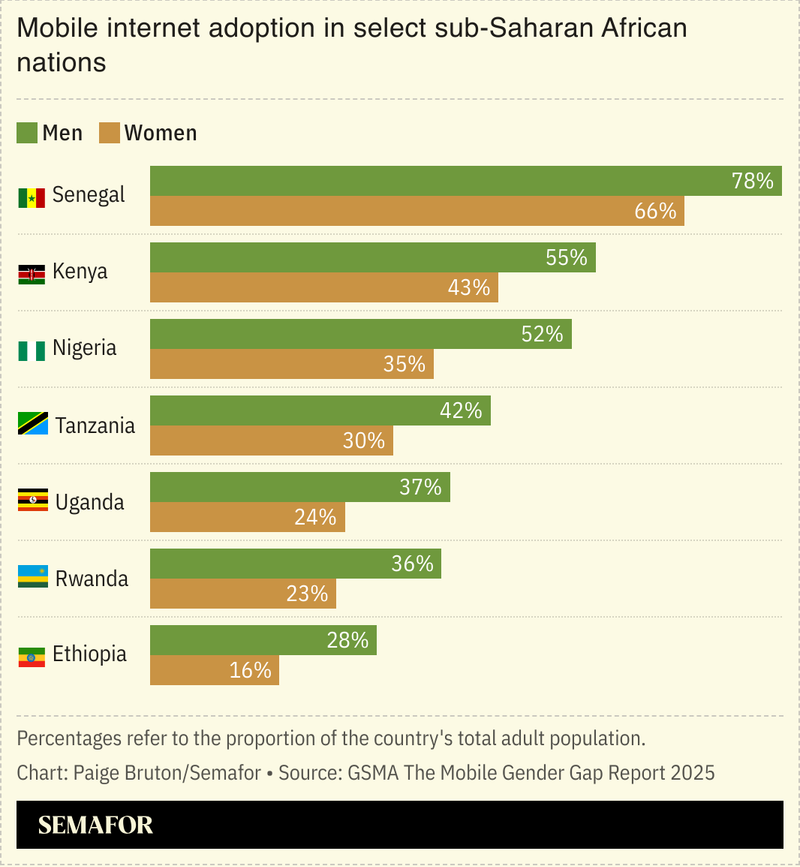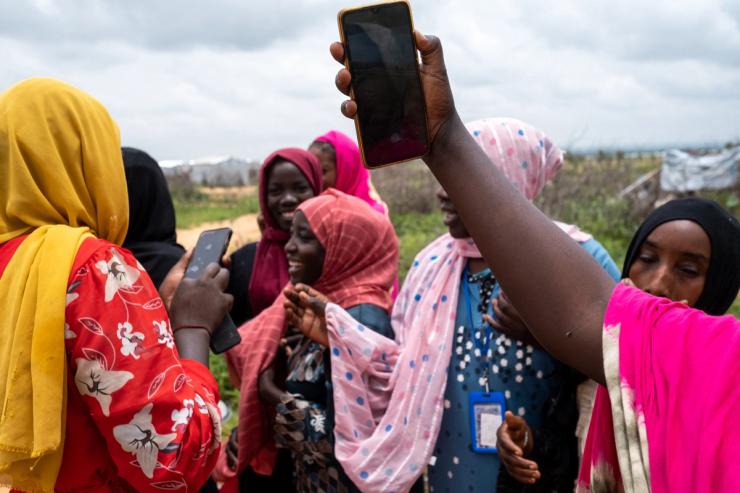The News
The gender gap in mobile internet use narrowed in sub-Saharan Africa for the second year in a row, a new report found, though it remains the region with the highest proportion of women yet to adopt the technology.
Sub-Saharan Africa showed “promising progress in closing mobile gender gaps,” the telecoms industry body GSMA wrote in the report seen by Semafor, with the gulf between men and women using mobile internet dropping from 36% in 2022 to 29% in 2024. Yet around 205 million women are still unconnected to mobile internet services, nearly two-thirds of the adult female population, the report to be published on Wednesday noted. Globally, progress in bridging the mobile gender gap in low- and middle-income countries has stalled.
The barriers “disproportionately affect women because of structural inequalities around income and education,” Claire Sibthorpe, head of digital inclusion at GSMA, told Semafor, with “social norms” also playing a role in driving the gender gap.
The lack of a smartphone and internet connectivity lowers women’s access to education and employment, according to development experts, which is why improving women’s digital connectivity is listed by the UN as a key indicator for achieving gender equality. Researchers at Oxford University have found that women who own mobile phones and use the internet are more empowered to make decisions over their health, while others have shown how phones can help alleviate poverty and boost women’s economic independence.

In this article:
Know More
In sub-Saharan Africa, affordability — particularly of handsets but also data costs — came up as the top barrier for men and women already aware of mobile internet, GSMA found. That was in contrast to South Asia where literacy and digital skills were the biggest obstacles.
Aside from the well-documented benefits of digital access for women, their families, and their communities, there is also a huge commercial and GDP opportunity, Sibthorpe said. The GSMA estimates that closing the gender gap in mobile ownership and use between 2023 and 2030 in low- and middle-income countries would add $1.3 trillion in additional GDP.
“Women are half the population, so this is critical for not just economies and governments, but also for businesses, to reduce this inequality in their customer base,” said Sibthorpe.
The View From Pakistan
GSMA data from Pakistan — where the gender gap narrowed more than any other country surveyed in 2024 — offers an insight into the importance of tackling social norms to improve digital inclusion. It found that “family disapproval” was the second most-reported top barrier to mobile internet use for female respondents in the South Asian country, a factor that did not present a barrier for men.
Notable
- The Digital Gender Gaps dashboard, a data visualization project by Oxford University researchers, estimates internet use and mobile ownership by gender.
- A study by two economists explores why the mobile phone gender gap matters and what we can do about it.


